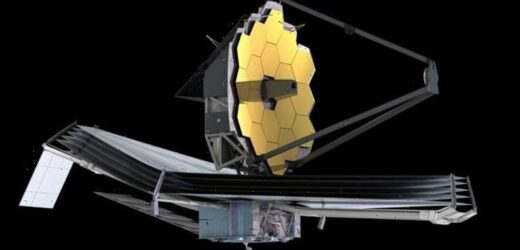NASA’s James Webb telescope being tested for space
When you subscribe we will use the information you provide to send you these newsletters. Sometimes they’ll include recommendations for other related newsletters or services we offer. Our Privacy Notice explains more about how we use your data, and your rights. You can unsubscribe at any time.
The JWST is regarded as being the most promising space telescope today. The machine will offer glimpses of the Universe which have never been seen before, which is why space fans are excited.
However, the scheduled launch of the JWST has been pushed back from October 31.
At an ESA briefing about the telescope, officials said they had discovered a payload fairing problem on an Ariane 5 – a launch vehicle which was provided by Arianespace.
Daniel de Chambure, acting head of Ariane 5 adaptations and future missions at ESA, said: “The origin of the problem has been found. Corrective actions have been taken.
“The qualification review has started, so we should be able to confirm all that within a few days or weeks.”
However, he did not elaborate on what the problem was.
Although a new launch date has not been set, it is likely it will occur in November, according to representatives.
Thomas Zurbuchen, NASA associate administrator for science, was asked if the launch would occur within weeks of the scheduled on, he said the timeframe is “approximately correct”.
He added: “We want to be sure that we launch exactly when we’re ready, not a day earlier.
READ MORE: NASA’s alien hunting James Webb Telescope opens mirror for final time
“That is, when the spacecraft is ready and when the rocket and the fairing and everything is ready.”
The JWST was meant to be launched sometime between 2007 and 2011 when work first began on a successor to Hubble in 1989.
The price has also skyrocketed, going from $1billion to almost 10 billion.
However, scientists are optimistic the JWST will help unravel the mysteries of the Universe and potentially find alien life.
The infrared machine is so powerful it will reach back to the furthest realms and the earliest moments of space and time.
And the JWST, which is named after NASA’s second administrator James Webb, who served from 1961 to 1968 and who played a major part in the Apollo missions, has the capability of scanning thousands of planets for alien life – even though those planets are thousands of light-years away.
As well as seeing further into space it will accurately measure the content of water, carbon dioxide and other components in the atmosphere of an exoplanet – a planet outside of our solar system – as well as tell scientists more about the size and distance these planets are from their host stars.
Source: Read Full Article






